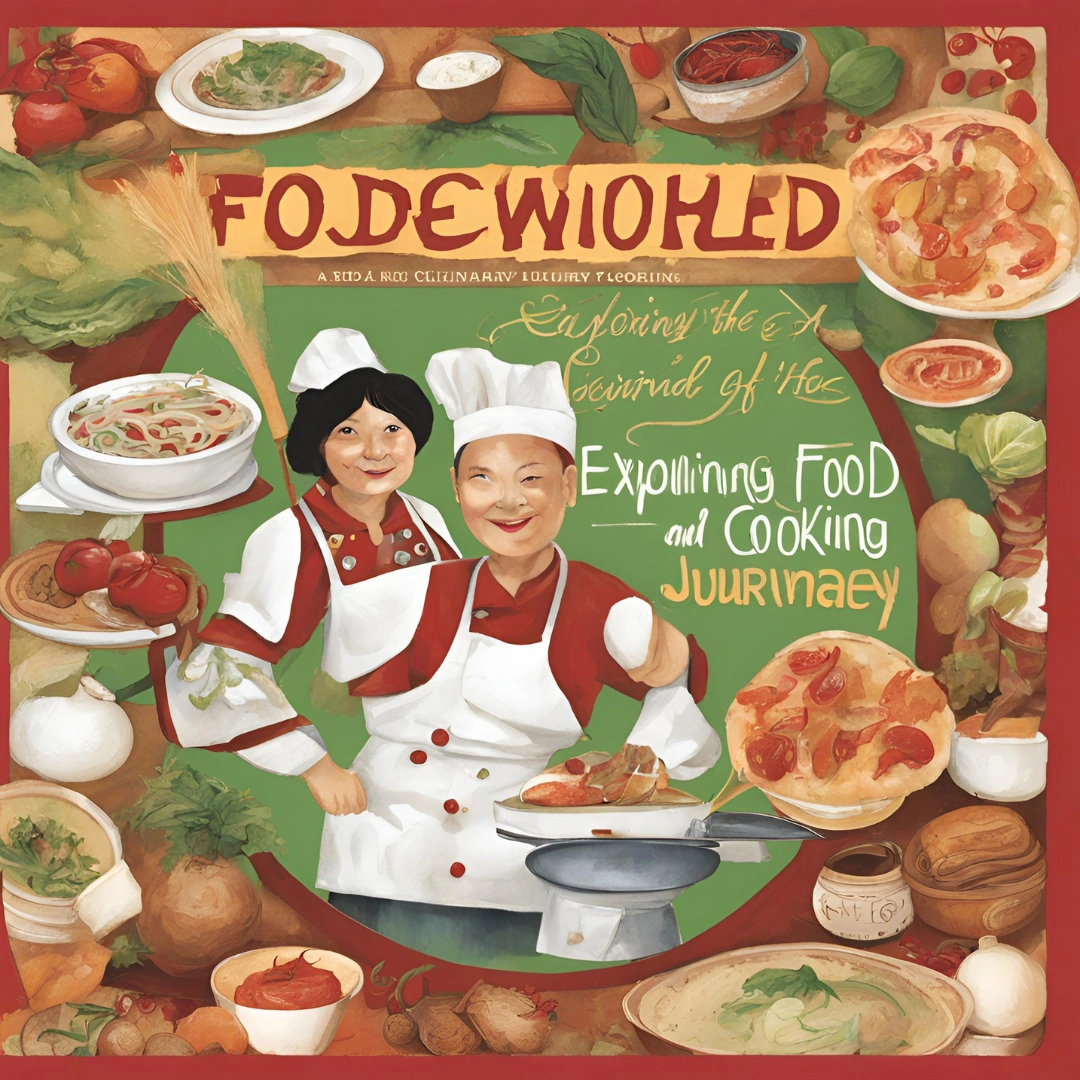Food is a reflection of culture, history, and creativity in addition to being a source of nourishment. We explore the rich and varied realm of food and cuisine on this gastronomic voyage, from age-old recipes handed down through the centuries to cutting-edge cooking methods that push the limits of taste and presentation. Come discover the delights of culinary arts, the craft of food preparation, and the narratives behind the foods that unite people around the table.
The Joy of Cooking
Cooking as a Creative Outlet
Cooking offers a creative opportunity for experimentation, expression, and discovery. Cooking lets people express their creativity and customise food to their own tastes, whether they follow a recipe or wing it using what they have on hand.
Cultivating Culinary Skills
The development of culinary talents requires repetition, tolerance, and an openness to new ideas. The secret to being a skilled cook is to never stop learning and experimenting, from mastering fundamental cooking methods like chopping, sautéing, and baking to refining more complex techniques like handling knives and balancing flavours.
Exploring Global Flavors
Regional Cuisine
Regional cuisine honours the distinctive tastes, components, and cooking customs of particular geographic regions. Regional cuisine, which ranges from Japanese sushi to Indian curries and Italian pasta dishes, is a reflection of the local ingredients and cultural history that influence each culinary culture.
Fusion Cuisine
Fusion cuisine creates inventive and varied dishes by fusing ingredients from several culinary traditions. Fusion cuisine combines flavours, preparation methods, and presentation styles to create a novel and captivating dining experience. It draws inspiration from a variety of cultures and ingredients.
The Art of Food Presentation
Plating Techniques
The art of food presentation entails arranging and designing food to improve its aesthetic appeal. Plating techniques such as layering, stacking, and garnishing transform basic materials into visually appealing gourmet creations that excite the senses.
Aesthetic Considerations
When presenting food, aesthetic factors including colour, texture, and balance are very important. To create visually spectacular foods that are as attractive to look at as they are wonderful to eat, imagination, precision, and attention to detail are necessary.
Food and Community
Shared Meals
Food has a special power to unite people, build relationships, and produce lifelong memories. Meals shared with loved ones, whether at home or in public places with friends and neighbours, foster a sense of community, camaraderie, and belonging.
Cultural Traditions
In many cultures, food is an integral part of many customs and festivals, ranging from religious rites and holiday feasts to social gatherings with family and community members. People can maintain culinary traditions for future generations and establish a connection with their past by investigating old recipes and cooking methods.
The Future of Food
Sustainable Cooking Practices
Waste minimization, ethical sourcing, and environmental stewardship are given top priority in sustainable cooking methods. Sustainable cooking makes a positive impact on a healthier planet and a more resilient food system by utilising seasonal, locally obtained resources, reducing food waste, and encouraging sustainable farming practices.
Culinary Innovation
New flavours, cooking methods, and eating experiences are produced by culinary innovation, which stimulates experimentation and creativity in the kitchen. Culinary innovation expands the frontiers of what is feasible and motivates both home chefs and professionals in the field, from plant-based cuisine to molecular gastronomy and food technology.
Exploring Culinary Techniques
Flavor Pairing
Understanding flavor pairing involves combining ingredients that complement each other to create harmonious and balanced dishes. Experimenting with sweet and savory combinations, contrasting textures, and aromatic spices opens up endless possibilities for culinary exploration.
Cooking Methods
Exploring different cooking methods, such as grilling, roasting, steaming, and sous vide, allows cooks to achieve varied textures, flavors, and results. Each cooking technique offers unique advantages and challenges, encouraging cooks to adapt and innovate in the kitchen.
Cultural Culinary Traditions
Heritage Recipes
Preserving heritage recipes passed down through generations celebrates culinary traditions and connects individuals to their cultural roots. Learning family recipes and cooking techniques from elders ensures that cherished culinary heritage is preserved and shared with future generations.
Festive Foods
Festive foods play a central role in cultural celebrations and holidays, serving as symbols of tradition, identity, and community. Exploring the significance of festive foods and participating in cultural festivities enriches the culinary experience and fosters cross-cultural understanding.
Sustainable Cooking Practices
Plant-Based Cooking
Embracing plant-based cooking reduces reliance on animal products and promotes environmental sustainability. Incorporating more fruits, vegetables, legumes, and grains into meals not only supports personal health but also reduces greenhouse gas emissions and conserves natural resources.
Seasonal Eating
Seasonal eating emphasizes consuming foods that are in season locally, reducing the carbon footprint associated with food transportation and storage. Embracing seasonal ingredients inspires creativity in the kitchen and encourages appreciation for the natural rhythms of the earth.
Culinary Creativity and Innovation
Food Photography
Capturing the beauty of culinary creations through food photography allows cooks to share their creations with others and document their culinary journey. Experimenting with composition, lighting, and styling enhances the visual appeal of dishes and showcases the artistry of cooking.
Culinary Entrepreneurship
Exploring opportunities in culinary entrepreneurship, such as starting a food blog, launching a catering business, or opening a restaurant, allows individuals to turn their passion for food into a rewarding career. Embracing innovation and entrepreneurship in the culinary field fosters creativity, collaboration, and culinary excellence.
Conclusion
Explore the diverse range of flavours, customs, and opportunities found in the realm of food and cookery. People can go on a delectable culinary exploration voyage that nourishes the body, mind, and spirit by embracing culinary methods, cultural traditions, sustainability practices, and culinary innovation. Every meal is an opportunity to celebrate creativity, community, and connection via the universal language of food, whether one is cooking for oneself, family, or friends.





Leave a Reply